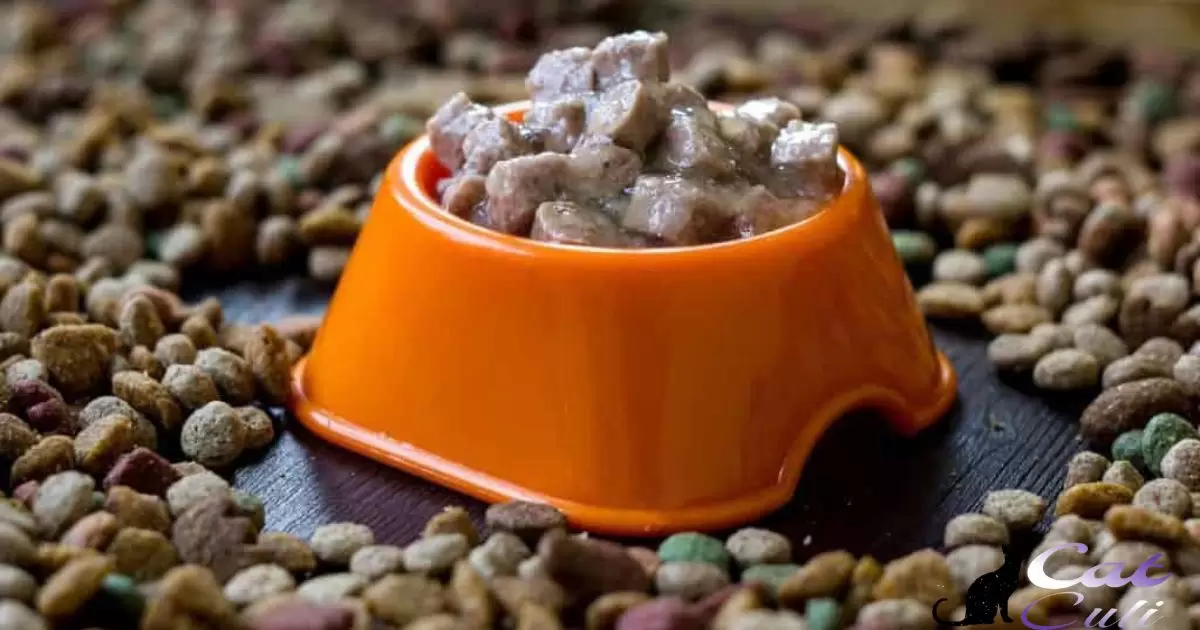Leaving wet cat food out overnight isn’t recommended. It can spoil quickly, attracting bacteria and making it unsafe for your cat to eat. To keep it fresh, refrigerate any uneaten wet food within an hour or two after serving. Discard any leftovers that have been left out for too long to ensure your cat stays healthy.
Can You Leave Wet Cat Food Out Overnight? This question often puzzles cat owners seeking to balance convenience with their pet’s well-being. Understanding the potential risks of leaving wet cat food out for extended periods is crucial. Delve into this query to uncover the dos and don’ts, ensuring your feline friend stays healthy and happy.
Leaving wet cat food out overnight can lead to bacterial growth, making it unsafe for your cat to consume. It’s best to refrigerate any uneaten portions promptly to maintain freshness and prevent potential health issues. Stay with us to discover more tips on keeping your cat’s food safe and nutritious.
How Long Can Canned Cat Food Sit Out Covered?
Canned cat food should not sit out for more than 2 hours when covered. Leaving it out longer can risk bacterial growth, spoiling the food and making it unsafe for your cat. Remember to refrigerate any unused portions promptly to maintain freshness and ensure your cat’s food stays safe to eat.
When canned cat food sits out covered, it becomes susceptible to bacteria within a couple of hours. Keeping it out longer might lead to spoilage, risking your cat’s health. To prevent this, refrigerate any leftovers within two hours to maintain its quality and keep your furry friend healthy.
What If It’s Mixed With Dry Kibble?
When wet cat food is mixed with dry kibble, it’s essential to monitor how long it’s left out. Combining them doesn’t slow down the spoilage process. Ensure any mixed food is consumed or refrigerated within an hour or two to prevent bacteria growth. Keeping an eye on the mixture’s freshness maintains its safety for your cat.
Mixing wet food with dry kibble can offer variety and balanced nutrition. However, be cautious about leaving this combination out too long. Storing any uneaten portions promptly helps preserve its quality, keeping your cat’s mealtime both enjoyable and healthy.
Is There A Difference Between Canned Wet Food And Wet Food Pouches?
| Aspect | Canned Wet Food | Wet Food Pouches |
| Packaging | Sealed metal cans | Flexible pouches |
| Shelf Life | Longer shelf life when unopened | Generally shorter shelf life |
| Variety of Flavors | Wide range of flavours and textures | Available in various flavours |
| Portion Control | Sometimes larger portions | Often single-serving portions |
| Storage | Requires refrigeration once opened | Usually resealable for storage |
| Cost | Can be more cost-effective in bulk | May be more convenient but costlier per serving |
This table outlines some key differences between canned wet food and wet food pouches, considering factors like packaging, shelf life, portion sizes, storage needs, variety, and cost.
What Should I Do With Leftover Wet Cat Food?
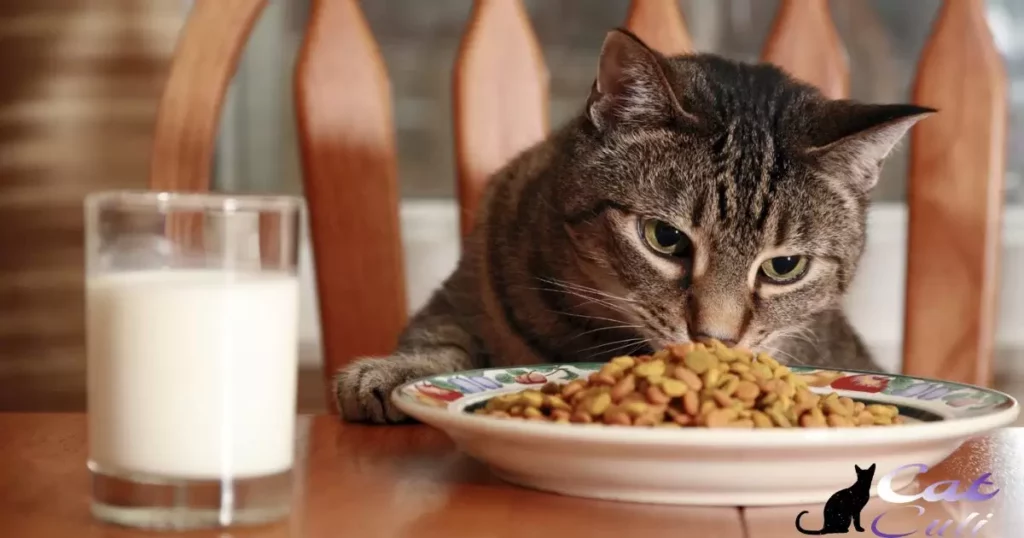
Leftover wet cat food should be refrigerated promptly after serving. Place it in an airtight container to maintain its freshness. Ensure it’s consumed within 24-48 hours to prevent spoilage and keep your cat healthy.
If your cat doesn’t finish the wet food, consider smaller servings next time. This reduces waste and ensures your pet gets fresh food at each meal. Don’t forget to check the expiry date before serving to guarantee its safety for your furry friend.
When Cat Food Spoils: The Risk Of Bacterial Contamination
Cat food spoils quickly, posing a risk of bacterial contamination. Bacteria thrive in spoiled food, potentially causing digestive issues or illness in cats. It’s crucial to store cat food properly and discard any expired or spoiled food promptly to safeguard your cat’s health.
Bacterial contamination in spoiled cat food can lead to digestive problems for your feline friend. Storing cat food in a cool, dry place and checking for expiration dates helps prevent the risks associated with spoiled food. Keeping a close eye on the quality of your cat’s food ensures their well-being and reduces the chances of bacterial contamination.
Type Of Bacteria
Salmonella: Causes gastrointestinal issues like vomiting and diarrhoea in cats if ingested through contaminated food.
E. coli: Can lead to severe stomach problems and, in some cases, urinary tract infections in cats.
Clostridium perfringens: Commonly found in spoiled food, causing gastrointestinal disturbances in cats.
Listeria: Can cause symptoms ranging from vomiting to more serious neurological issues in cats.
Staphylococcus: May lead to skin infections or digestive problems in cats if consumed in contaminated food.
The Initial Amount Of Bacteria
The initial amount of bacteria refers to the number of bacteria present at the start of a process or in a given environment. These bacteria can come from various sources such as air, surfaces, or ingredients used in food preparation.
Measuring the initial amount of bacteria helps in establishing hygiene protocols and proper storage conditions to limit bacterial proliferation. By identifying the starting point of bacterial presence, food handlers can implement effective strategies to minimize contamination risks and maintain food quality and safety standards.
Temperature Concerns
Temperature plays a vital role in keeping cat food safe. When it’s too warm, wet cat food can spoil quickly, leading to bacterial growth. To prevent this, store the food in a cool place, and after serving, promptly refrigerate any leftovers to maintain freshness and avoid potential health risks.
On the other hand, if the environment is too cold, the food might harden and become less appetizing for your cat. It’s essential to strike the right balance in temperature to ensure your furry friend enjoys their meals while staying safe and healthy.
Humidity Levels
Humidity levels impact our daily lives. High humidity can make the air feel sticky and uncomfortable, especially in warmer climates. It can also promote mold growth in homes. On the other hand, low humidity can cause dry skin and respiratory issues, particularly during colder months.
Monitoring humidity levels helps create a more comfortable environment indoors.Maintaining proper humidity is crucial for various purposes. For instance, in industries like manufacturing and healthcare, controlling humidity ensures the quality of products and equipment.
In homes, managing humidity levels can prevent damage to wooden furniture and alleviate certain health concerns. Balancing humidity contributes significantly to our overall comfort and well-being.
Types Of Cat Food: How Quickly Do They Spoil?
Different types of cat food spoil at varying rates. Dry kibble tends to last longer than wet or canned food due to its low moisture content. Wet cat food, with its higher moisture levels, can spoil more quickly, especially if left out for extended periods. Checking expiration dates and properly sealing opened packages helps maintain freshness.
Understanding the shelf life of different cat food types is crucial. Dry food generally has a longer shelf life, lasting months when stored properly in a sealed container. On the other hand, wet or canned food should be used within a few days after opening to prevent spoilage and ensure your cat gets the best nutrition possible.
Dry Cat Food
Dry cat food is a popular choice among pet owners due to its convenience and longer shelf life. These kibbles contain essential nutrients and help maintain dental health by reducing plaque and tartar buildup. Cats can graze on dry food throughout the day, making it a practical option for busy households.
While there’s a diverse array of cat food available, designed to cater to unique dietary requirements like weight control or reducing hairballs, it’s important to note an oddity: Mice Eat Cat Food. Despite this unexpected fact, the crunchy consistency of dry cat food encourages good chewing habits and its convenient storage in airtight containers ensures prolonged freshness.
How Long Can You Safely Keep Dry Cat Food Out?
Dry cat food can be kept out for up to 24 hours without losing its quality or becoming unsafe for your cat to eat. Remember to store it in a cool, dry place away from sunlight to maintain its freshness. Keeping the food in a sealed container helps prevent moisture and pests from affecting its quality.
However, after a day, it’s advisable to discard any uneaten dry cat food to ensure your cat consumes fresh and nutritious meals. Regularly checking the expiration dates on the packaging can also help maintain the food’s quality and your cat’s health.
How Long Can You Leave Wet Cat Food Out Overnight?
Wet food should ideally be consumed within 30 minutes to an hour. If left out longer, it may become unsafe for your cat to eat. Refrigerating any uneaten portions within this timeframe helps maintain freshness and ensures your cat’s meal stays safe.
Remember, bacteria thrive in moist environments, and wet food left out for too long can pose health risks to your feline friend. To keep your cat healthy, it’s crucial to adhere to recommended timeframes and promptly refrigerate any leftover wet food after your cat’s mealtime.
How Long Can Wet Cat Food Be Refrigerated?
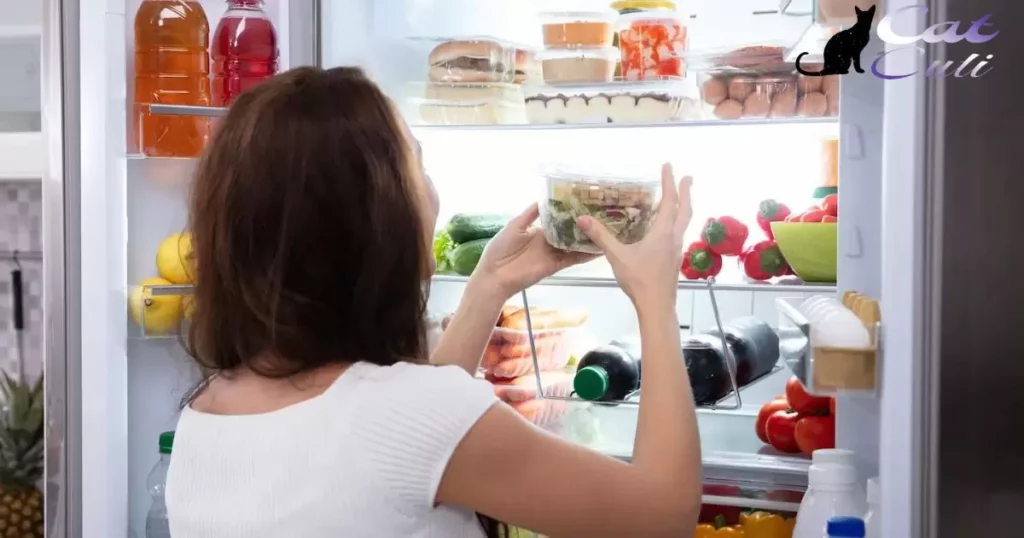
Wet cat food stays fresh in the refrigerator for about 2 to 3 days after opening. Once you open a can or pouch of wet cat food, transfer any uneaten portion into an airtight container and store it in the fridge. Remember to use it within this timeframe to ensure its quality and avoid potential spoilage.
After the 2 to 3-day mark, it’s advisable to discard any remaining wet cat food to prevent bacterial growth and keep your cat safe from consuming spoiled food. Regularly check expiration dates and follow storage guidelines to maintain the food’s freshness and your pet’s health.
Should I Leave Dry Food Out For My Cat Overnight?
Leaving dry food out for your cat overnight isn’t ideal. It can attract pests and lose its freshness, potentially becoming less appealing or even spoiled for your cat to eat. Consider portioning your cat’s daily dry food intake into meals, serving them at specific times during the day to ensure freshness and avoid wastage.
Allowing access to dry food for a prolonged period may lead to overeating or weight issues in some cats. It’s recommended to establish a feeding routine by offering measured portions of dry food at designated times, promoting healthy eating habits and maintaining your cat’s optimal weight.
Does Dry Cat Food Go Bad If Left Out?
Dry cat food can spoil if left out for too long due to exposure to air and moisture, which can lead to a loss of nutrients and taste. Storing it in an airtight container helps maintain freshness. Extended exposure to air might result in the food becoming stale or less appetizing for your cat.
Keep an eye on the expiration date and the food’s condition. Sealing the bag tightly or using airtight containers after each use can help prevent the food from going bad quickly. Regularly checking the quality ensures your cat enjoys fresh and nutritious meals every time.
Should You Refrigerate Wet Cat Food After Opening?
Once opened, refrigerating wet cat food is crucial to maintain its freshness and prevent bacterial growth. Storing it in the fridge keeps it safe for your feline friend’s consumption and ensures it stays palatable for longer periods.
Refrigeration preserves the quality of wet cat food, safeguarding it from spoilage and maintaining its nutritional value. By promptly refrigerating the opened cans or pouches, you’re prioritizing your cat’s health and well-being.
How Long Can You Leave Wet Cat Food Out?
Wet cat food shouldn’t be left out for more than 2 hours. Bacteria can quickly multiply in moist environments, making the food unsafe for your cat. To maintain freshness and prevent potential illness, refrigerate any uneaten portions within this time frame.
Leaving wet cat food out for extended periods can lead to spoilage. This spoilage can cause digestive issues or even foodborne illnesses in your cat. Remember to follow the 2-hour rule to keep your cat’s food safe and nutritious.
How Long Can Wet Cat Food Sit Out?
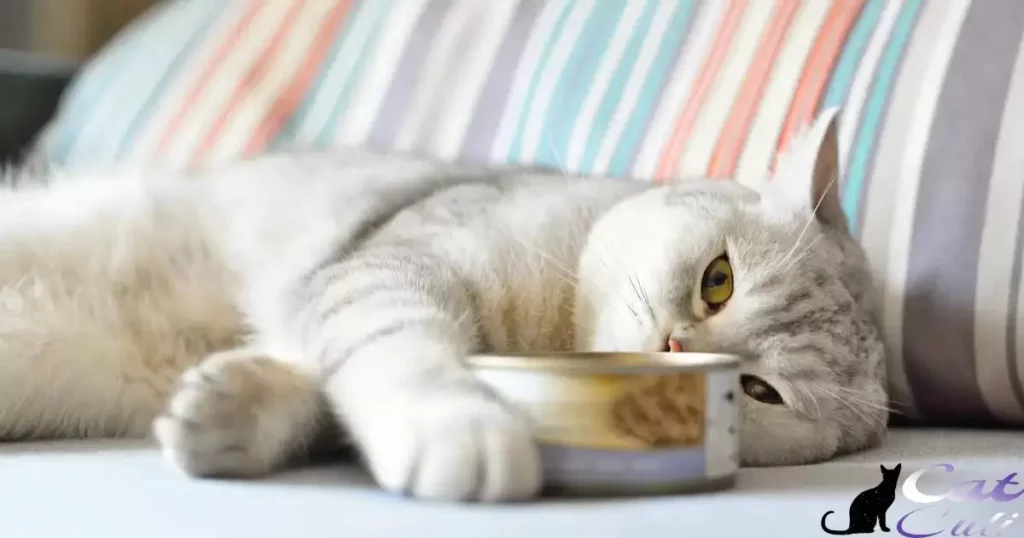
Wet cat food shouldn’t sit out for more than 30 minutes to an hour. Leaving it out for longer can invite bacteria to grow, making it unsafe for your cat. It’s crucial to refrigerate any uneaten portions promptly to maintain freshness and ensure your cat’s health.
To keep wet cat food safe, serve only the amount your cat can finish in one sitting. If there’s any food left, store it in the refrigerator and use it within a day or two to prevent spoilage. By following these simple steps, you can ensure your cat enjoys fresh and safe meals every time.
Is It Okay To Leave Wet Cat Food Out Overnight?
Leaving wet cat food out overnight isn’t recommended. It can spoil quickly, attracting bacteria and becoming unsafe for your cat. Refrigerate any leftovers within an hour or two after serving to keep it fresh and safe for your feline friend.
Keeping wet cat food out overnight can lead to potential health risks for your pet. Bacteria thrive in moist environments, making the food prone to spoilage. Remember to store uneaten wet food in the refrigerator promptly to ensure your cat’s well-being.
How Many Hours Does Wet Cat Food Last?
- Wet cat food can typically last for about 2 hours at room temperature.
- If the temperature is higher than 90°F (32°C), wet cat food should not be left out for more than 1 hour.
- Refrigerate any uneaten wet cat food within 1-2 hours to prevent bacterial growth and spoilage.
- Once opened, wet cat food can last in the refrigerator for about 2-3 days.
- Always check the packaging or manufacturer’s instructions for specific storage guidelines for the particular brand of cat food.
Can I Give My Cat Wet Food At Night?
Feeding your cat wet food at night is okay. It’s a good way to ensure they get enough moisture in their diet. Just remember to refrigerate any uneaten portions to keep them fresh and safe for your cat’s next meal. Some cats prefer eating at night, so offering wet food then can be a convenient and satisfying choice for them.
When you provide wet food at night, it can also help your cat stay hydrated throughout the night. Cats often have more active hours during the night, so having a meal then can align with their natural feeding instincts. Just make sure to balance their overall diet and portion sizes to keep them healthy and happy.
How Do I Feed My Cat Wet Food While Away?
When you’re away, feeding your cat wet food can be managed using timed automatic feeders. Set these up to dispense the appropriate portion at designated meal times. Another option is asking a trusted friend or hiring a pet sitter to visit and feed your cat the required wet food servings while you’re gone.
Consider pre-portioning the wet food into individual containers and leaving clear instructions for someone trustworthy to feed your cat at specific times. This method ensures your cat receives its meals on time, even in your absence.
How Long Can Wet Cat Food Sit Out Covered?
Wet cat food can sit out covered for about 30 minutes to an hour before it starts spoiling. After this time, bacteria can multiply quickly, making it unsafe for your cat to eat. To ensure your cat’s safety, refrigerate any leftover wet food within this timeframe to keep it fresh and suitable for later consumption.
Leaving it out for too long may pose health risks to your furry friend. The temperature of the surroundings matters too. Warmer environments accelerate bacterial growth, shortening the safe duration for leaving wet cat food out.
Does Wet Cat Food Go Bad If Left Out?
Leaving it exposed for too long can lead to food spoilage, potentially causing stomach issues for your pet. It’s important to refrigerate any uneaten wet cat food promptly to maintain its freshness and quality, ensuring your cat’s health stays in top shape.
This can quickly turn the food bad, potentially causing digestive problems for your feline friend. Remember, to keep your cat safe and healthy, store wet cat food properly in the refrigerator after feeding time to prevent spoilage and maintain its nutritional value.
Can I Leave Dry Cat Food Out Overnight?
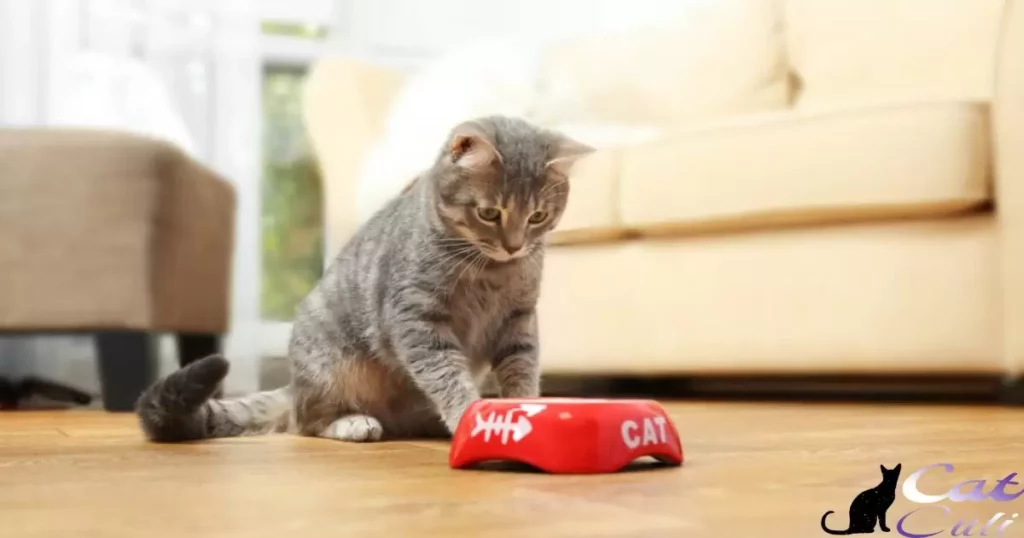
Leaving dry cat food out overnight is generally safe as it doesn’t spoil quickly. It might lose some of its nutritional value and taste when exposed to air and moisture for too long. To maintain freshness, consider storing dry cat food in a sealed container and avoid leaving it out for extended periods.
Keeping dry cat food fresh helps ensure your pet gets the best nutrition. If you’re concerned about pests or the food going stale, it’s a good practice to store it in an airtight container and refrain from leaving it out overnight for extended periods.
How To Store Wet Cat Food After Opening
After opening wet cat food, store it in an airtight container in the refrigerator. Keep the food covered to maintain freshness and prevent odours. Use it within a day or two for the best quality and discard any leftovers to ensure your cat’s safety.
Avoid leaving opened cans of wet cat food out at room temperature for too long. Refrigeration slows bacterial growth, preserving the food’s quality. Remember to seal the container tightly after each use to retain its flavour and nutritional value.
FAQ’s
Can I give my cat wet food if I leave it open overnight?
It’s safer to avoid feeding cats wet food left open overnight due to potential bacterial growth. Discard for your cat’s health.
How do you store wet cat food without a refrigerator?
Without a fridge, opt for single-serve packets or pouches. Keep unused portions sealed in a cool, dry place.
Can cats eat cold wet food?
Yes, many cats don’t mind cold wet food. Let it sit for a few minutes to reach room temperature if your cat prefers.
Conclusion
Leaving wet cat food out overnight isn’t advisable. It can spoil quickly, posing health risks due to bacterial growth. Remember, the answer to Can You Leave Wet Cat Food Out Overnight? leans towards a cautious no. To ensure your cat’s well-being, refrigerate any uneaten portions promptly. This simple step helps maintain freshness and prevents potential foodborne illnesses.
Prioritize your cat’s safety by adhering to proper food handling. Storing wet cat food in the refrigerator or using single-serve portions minimizes risks associated with leaving it exposed for extended periods. By following these guidelines, you guarantee your feline friend enjoys safe, fresh meals every time, steering clear of potential health issues.
